There are many difficult piano pieces. We present five pieces that are so demanding that they were considered unplayable at times. Even today, they still demand skills from pianists that cannot be acquired through practice alone.

Founder and Piano teacher
You want to learn to play the piano but aren’t sure which instrument suits you best? An acoustic piano with its warm tone? An elegant grand piano? Or maybe a versatile digital piano or compact keyboard? Each model has its own character – and can become your musical companion.
In this article, we’ll show you what really matters: which type of piano fits your daily life, expectations, and budget, how much a good beginner piano costs – and how to tell if an instrument will truly motivate you in the long run. Because in the beginning, one thing matters most: that you feel comfortable at your piano. The rest comes with every note.
Table of contents
In general: As a beginner, choose an instrument that fits your needs. Decide between keyboard, digital piano, and acoustic piano – depending on how much space you have, how mobile you want to be, and what kind of playing experience is important to you.
Important: At least 88 weighted keys are ideal for developing proper technique and easily switching to other pianos later.
Tip: Try out different piano models before buying and invest in good accessories to make starting out easier and more enjoyable.
Learning to play the piano is a journey full of joy and challenges. Your first melodies will excite you, but doubts and small mistakes are also part of the process – they are signs of progress. The piano is more than just an instrument; it becomes a companion, awakens passion, and with each tone strengthens your connection to music.
We want to encourage you and make it easier to get started by helping you find your ideal piano. Playing piano also means getting to know yourself better, being patient, and celebrating every small success. With the right instrument by your side, you can begin this wonderful journey full of inspiration and confidence.
Imagine sitting at the piano, your fingers gliding effortlessly across the keys as you play melodies that move your heart. With music2me, you can learn piano at your own pace – step by step with a system that truly helps you progress, whether you’re a beginner or already advanced.
Over 400 video lessons & downloadable sheet music
Interactive tools like Skill Check & smart practice mode
Weekly live classes & personal teacher support
Exclusive Discord community for motivation & exchange
Consider how and where you want to play. If you want to practice flexibly and quietly – for example, in a rental apartment or at night – a digital piano with headphone output is a great choice. Prefer a natural playing feel and the full resonance of wood? Then an acoustic piano may be right. A keyboard can also be a good temporary option if you want to stay mobile or just explore piano playing.
Beginners should go for instruments with weighted, velocity-sensitive keys. These simulate the feel of a real piano and promote proper technique from the start. Ideally, the piano has 88 keys like a standard piano. Pay attention to how the keys feel: Are they evenly weighted? Do they respond precisely to your touch?
Entry-level digital pianos of good quality start at around €400–€900. Acoustic pianos start higher, from around €2,000 – but they are more durable and offer a deeper musical experience. For used pianos, have them inspected by a professional. Don’t forget to budget for accessories like a piano bench or headphones.
Used acoustic pianos can be a good option if well maintained and regularly tuned. Stick to well-known brands, and don’t hesitate to involve a piano technician for an assessment. For digital pianos, ensure all keys work properly and the electronics are functional – ideally, test before buying.
Whether at a music store, through experienced teachers, or in trusted online forums – personal guidance can help you avoid typical beginner mistakes. Many stores offer rent-to-own models, which are great if you're unsure about committing long-term.
Before picking your first piano, it’s worth taking a closer look at the different types – each has its own advantages, requirements, and price ranges.
Feature | Acoustic Piano | Digital Piano | Keyboard |
Sound | Very authentic | Very good (depends on model) | Rather artificial |
Playing feel | Ideal – real key feedback | Very good (with weighted keys) | Simple, often unweighted |
Volume | Loud, no headphones possible | Adjustable volume + headphone jack | Speakers or headphones |
Maintenance | Requires regular tuning | No maintenance | No maintenance |
Size & weight | Large & heavy | More compact and lightweight | Very light & portable |
Price | High (from €2,000) | Medium (from €400–600) | Low (from €100–300) |
Extras | None | Many digital features | Many sounds & learning tools |
For beginners? | Yes, if long-term investment planned | Yes, ideal entry-level choice | Limited – more suitable for children or casual use |
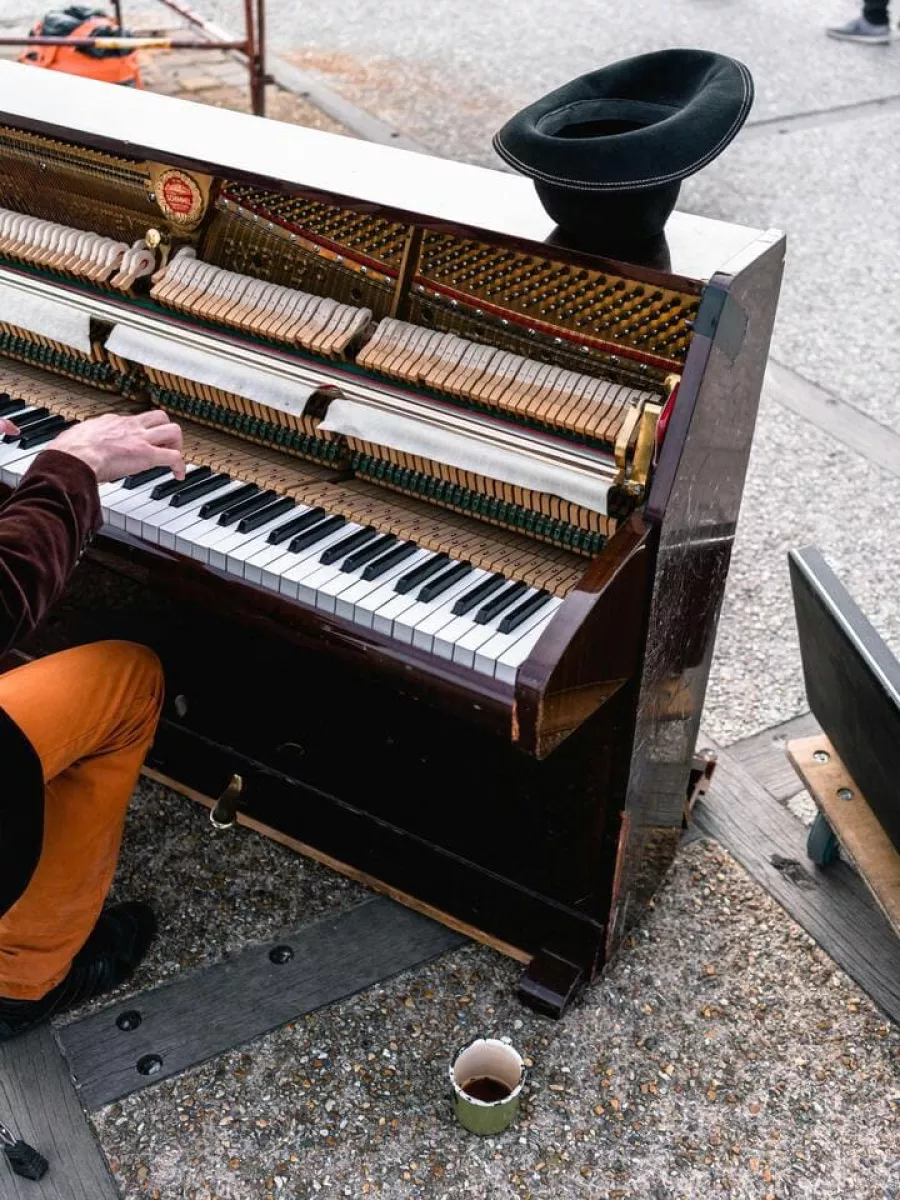
A traditional acoustic piano is, for many, the epitome of genuine piano playing – with its rich, warm sound, natural touch, and the immediate resonance of the wood. It responds very sensitively to dynamics and expression, fostering a strong sense of sound shaping and technique right from the start.
For beginners, an acoustic piano can be a wonderful choice – provided it fits into daily life. That’s because it needs regular tuning, is significantly heavier and less mobile, and cannot be played silently. Those who have the space and the means will be rewarded with an authentic playing experience that many digital alternatives can’t fully replicate. Especially for learners with long-term interest, an acoustic piano can be an investment that pays off.
Advantages of the acoustic piano:
Very authentic sound and playing feel
Expressive dynamics and resonance
Durable and retains value with proper care
Promotes precise technique and ear training
Disadvantages of the acoustic piano:
More expensive to purchase
Large and heavy, not mobile
Requires regular tuning
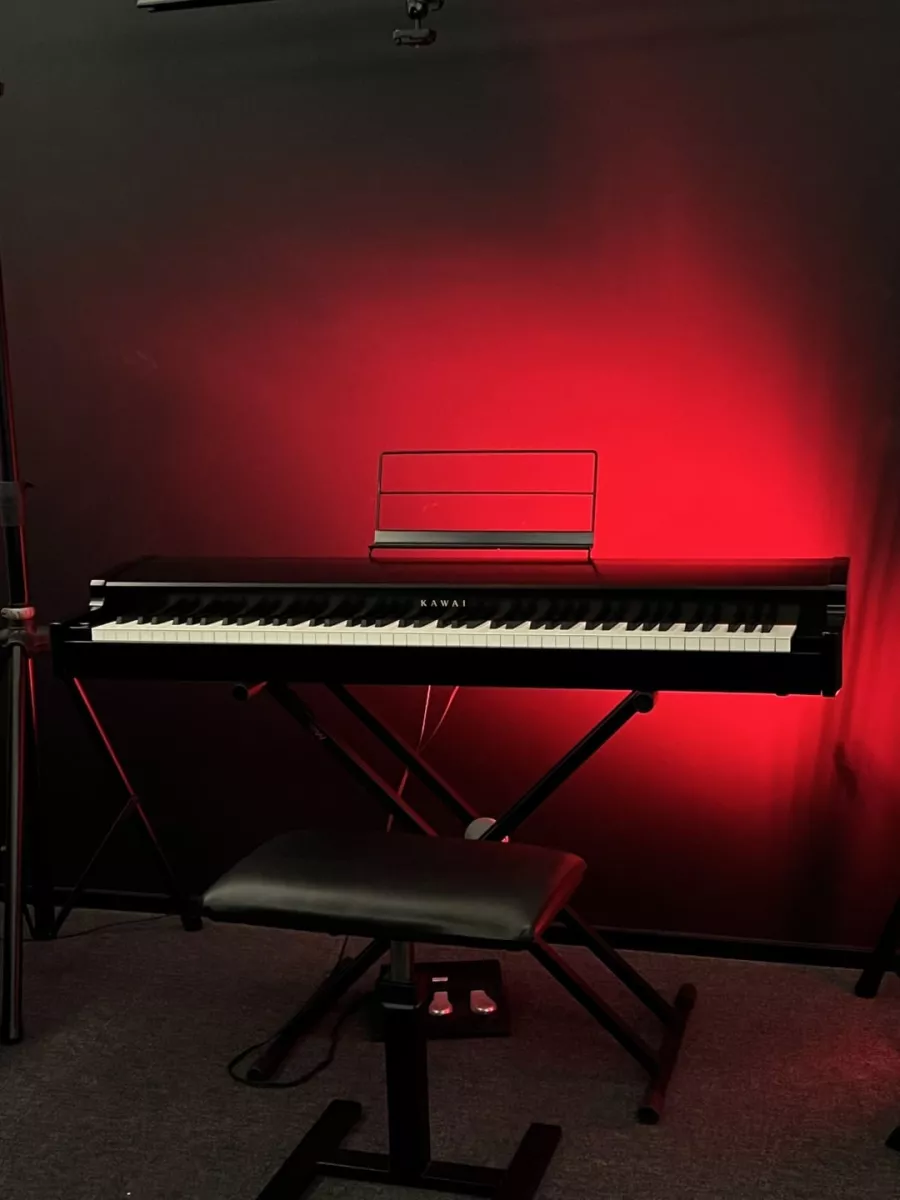
The digital piano is primarily designed as a replacement for an acoustic piano. It places great emphasis on achieving an authentic sound and a realistic playing experience. For this reason, it is typically equipped with a weighted hammer-action keyboard, which mimics the resistance and dynamics of a real piano.
The sound quality of a digital piano is generally of higher quality as well, especially the piano tones, which are often meticulously sampled or modeled. Additionally, special sounds such as organ or string tones can sometimes also be produced on a digital piano. Digital pianos are therefore particularly well-suited for pianists seeking a realistic playing experience. Usually, they also come with features such as a metronome and MIDI connectivity for recording.
Advantages of digital pianos:
Authentic playing feel thanks to weighted keys
High-quality piano sounds, no tuning required
Silent practice possible with headphones
Disadvantages of digital pianos:
Slightly less expressive depth than an acoustic piano
No mechanical interior – less of a "real" feel
High-quality models can be expensive
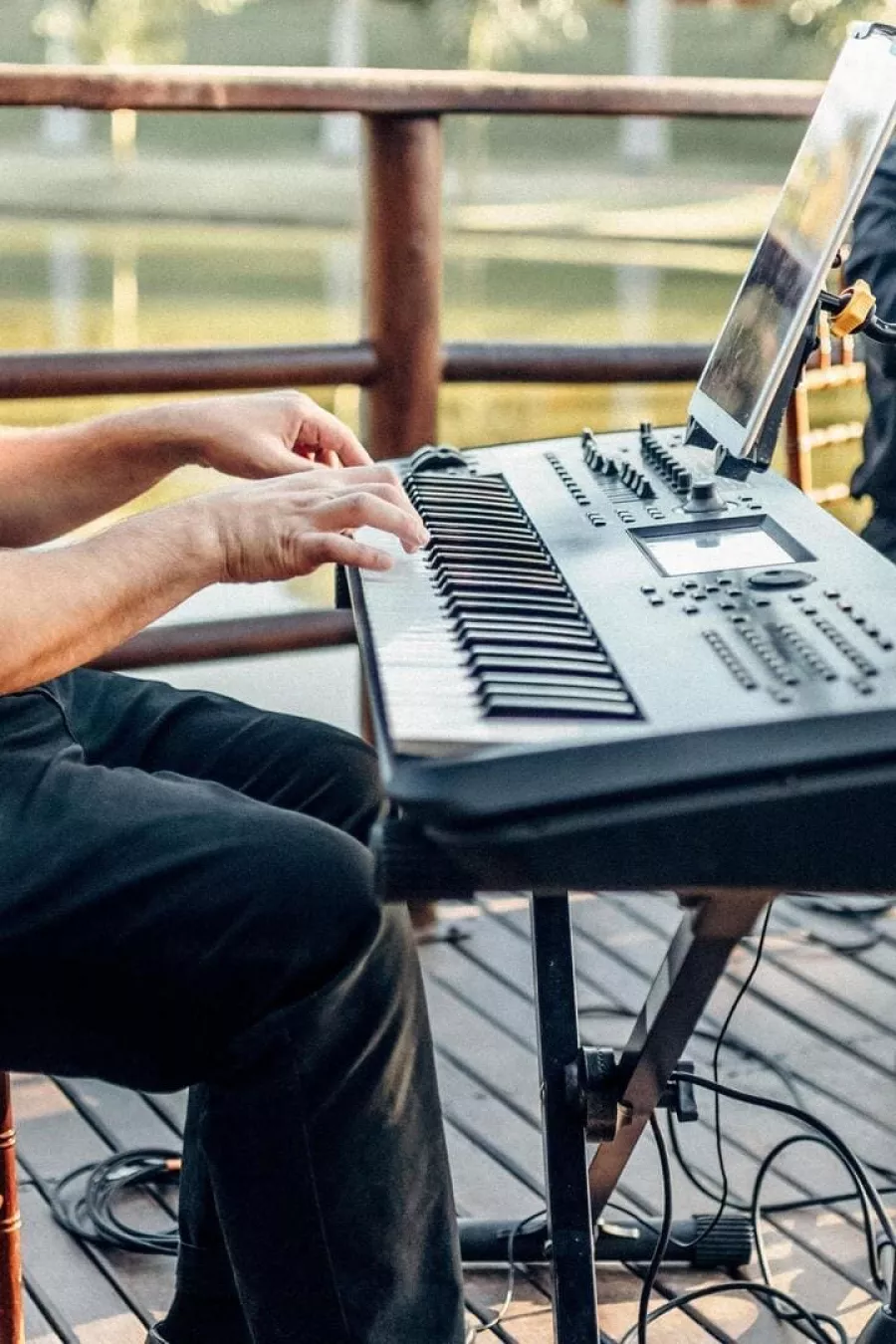
A keyboard, on the other hand, is usually lighter, more compact, and more versatile. It often features a wide variety of sounds, auto-accompaniment functions, and rhythms, making it especially appealing to beginners entering the world of piano or to live performers.
The keyboard's keys are generally not weighted and often come with fewer keys (typically 61 or 76 instead of the standard 88 found on pianos), which results in a playing feel that differs significantly from that of a piano.
However, it offers greater flexibility in musical styles and creative possibilities for showcasing sounds – for example, through built-in recording features or MIDI connectivity, allowing you to capture and preserve your creations.
Advantages of the keyboard:
Very lightweight and space-saving
Wide variety of sounds and rhythms
Affordable to purchase
Ideal for creative experimentation and music production
Disadvantages of the keyboard:
No realistic playing feel due to unweighted keys
Limited dynamics and touch response
Less suitable for classical piano playing
Not ideal for long-term practice of classical repertoire
In summary, the digital piano is the best choice for beginners who want to learn to play the piano as realistically as possible – offering an authentic sound and playing feel, combined with practical features. The acoustic piano stands out with its natural sound and expressiveness, but it is more expensive and requires regular maintenance. The keyboard scores points for its versatility, mobility, and creative potential, but it is only partially suitable for learning classical piano technique. Which type of piano do you identify with the most?
Now that you know the key elements of a piano, it’s time to look at real models and decide which ones seem appealing to you. We believe the following digital pianos and keyboards are particularly suitable for beginners entering the world of piano:
The Thomann UP 121 E/P is characterized by its successful balance of sound quality and price-performance ratio. With a height of 121 cm, it belongs to the popular category of studio pianos. This means it's large enough for a full and resonant sound but compact enough to blend harmoniously into living spaces.
Especially for beginners, the UP 121 E/P is an ideal companion. It features a smooth-playing action, allowing pianists to develop a good sense of expression and sound right from the start. The keyboard provides a pleasant resistance that promotes the right finger technique without being overwhelming.
The instrument also convinces in terms of sound. Its warm and balanced tonality successfully conveys musical nuances. In addition to solid intonation, the Thomann UP 121 E/P offers tuning stability. This is particularly important so that learning progress isn’t hindered by technical shortcomings.
Last but not least, the UP 121 E/P also scores visually. With its high-gloss polished case, it appears elegant and timeless without being flashy.

5 Key Facts about the Thomann UP 121 E/P
Balanced sound in a compact size
Excellent value for money
Smooth-playing keyboard action
Tuning stability
Timeless look
The Thomann DP-33 B is an affordable digital piano that offers solid features and an authentic playing experience. With its 88 weighted keys and hammer action, it delivers a realistic key response that comes very close to that of an acoustic piano. The touch sensitivity can be individually adjusted.
A variety of 26 different sounds contribute to its tonal diversity, including classic piano and e-piano tones, as well as organs, strings, and other instruments. Effects such as reverb, chorus, and an equalizer allow additional customization and let the piano shine across various music styles.
Practical practice functions like a metronome, dual and split mode, and 60 built-in practice songs make the learning process easier. Two headphone outputs allow for quiet playing or practicing together, while USB-MIDI and audio ports enable flexible connection to other devices. Two 15-watt speakers deliver a rich, clear sound for your optimal audio environment.

5 Key Facts about the Thomann DP-33 B
88 weighted keys with hammer action and adjustable touch sensitivity
26 versatile sound options
Two headphone outputs and powerful speakers (2 x 15 W)
USB-MIDI and audio connections
Attractive price-performance ratio
The Yamaha YDP-145 WH Arius impresses with a realistic piano experience and high-quality sound. At its core is the richly sampled sound of the renowned Yamaha CFX concert grand, which, thanks to modern resonance technology, sounds especially lively and expressive. This creates an authentic, room-filling tone that comes remarkably close to that of an acoustic instrument.
The Graded Hammer Standard (GHS) keyboard with 88 weighted keys offers a balanced playing feel with heavier keys in the lower and lighter keys in the upper registers. A damper pedal with half-pedal functionality allows for precise sound control. A natural sound image is ensured by the integrated speaker system with special sound projection through cabinet openings, creating a pleasant spatial sound effect.
In addition to the authentic playing feel, the YDP-145 offers many features for teaching and practice: ten tones, including e-piano, organ, and strings, are available. While this is slightly fewer than the Thomann DP-33, this model offers over 350 built-in pieces, including classical works and études, which provide variety in practicing.
A special extra is the free Smart Pianist app, which allows you to control sounds, effects, and songs easily via smartphone or tablet. Recording functions allow you to capture your own pieces and listen back for review. Also practical is the duo mode, which splits the keyboard into two identical playing areas. Other useful features such as automatic sound optimization at low volumes, a headphone optimizer for spatial sound, and a volume limiter for hearing protection complete the package.
All in all, the Yamaha YDP-145 WH Arius is a well-rounded digital piano for those who value an authentic playing feel and high-quality sound.

5 Key Facts about YDP-145 WH
Authentic sound of the Yamaha CFX concert grand with realistic resonance technology
88 weighted keys with Graded Hammer Standard (GHS)
350 built-in songs including practice and classical pieces
Compatible with the Yamaha Smart Pianist app
Additional features: duo mode, recording function, headphone optimizer, and automatic sound optimization
The Casio CDP-S110 BK Set is a compact and versatile keyboard set, particularly suitable for beginners and mobile musicians. Unlike many other keyboards, it features 88 weighted keys with scaled hammer action, providing an authentic playing experience that comes surprisingly close to that of an acoustic piano. Thanks to its slim design and light weight, the instrument is easy to transport and fits easily into small spaces.
With ten different tones, including acoustic and electric piano sounds, the CDP-S110 offers tonal variety that can be further enhanced with effects like reverb and chorus. Of course, it also includes practical functions like an integrated metronome, a transpose function, and control via the free Casio Music Space app, which effectively supports practice and learning.
The digital piano can be powered by either an adapter or batteries, making it suitable for flexible use in various locations. The package includes everything you need to get started right away: sustain pedal, music rest, power adapter, a sturdy stand, and headphones. In short, a complete starter kit.
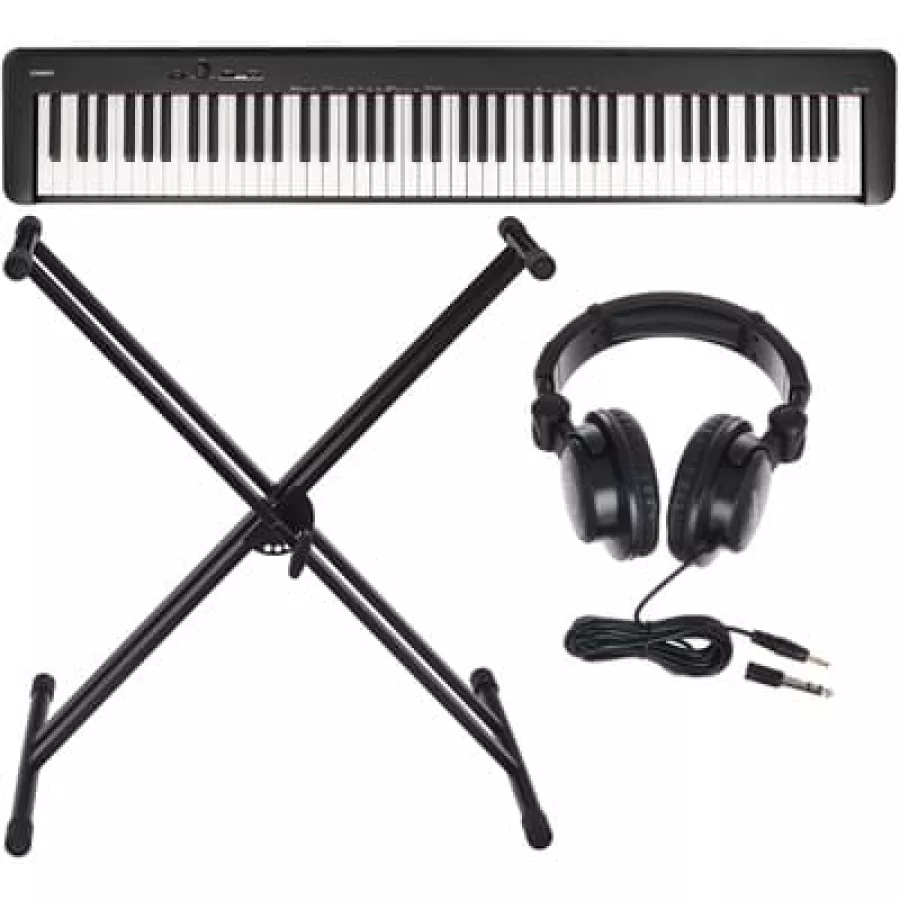
5 Key Facts about CDP-S110
88 weighted keys with scaled hammer action
Compact, lightweight design
Versatile sound palette with 10 tones and effects
Practice functions including metronome, transpose, and app control
Flexible operation via AC power or batteries
The Thomann SP-120 is a compact and lightweight digital piano with 73 velocity-sensitive keys that provide expressive and versatile playing. It offers a selection of acoustic and electric sounds, which can be refined with reverb and chorus effects. The 32-note polyphony ensures a clean sound, even during complex passages.
Thanks to its USB connectivity, the piano can be easily connected to computers or mobile devices, facilitating integration into music production and recording. The built-in speakers deliver a clear, powerful sound that remains undistorted even at higher volumes. Like the CDP-S110, the SP-120 can also be battery-operated, further increasing its flexibility.
Equipped with a sustain pedal, music rest, and power adapter and weighing only around 6 kilograms, it is pleasantly light and optimally suited for mobile use. All of this at an unbeatable price-performance ratio.
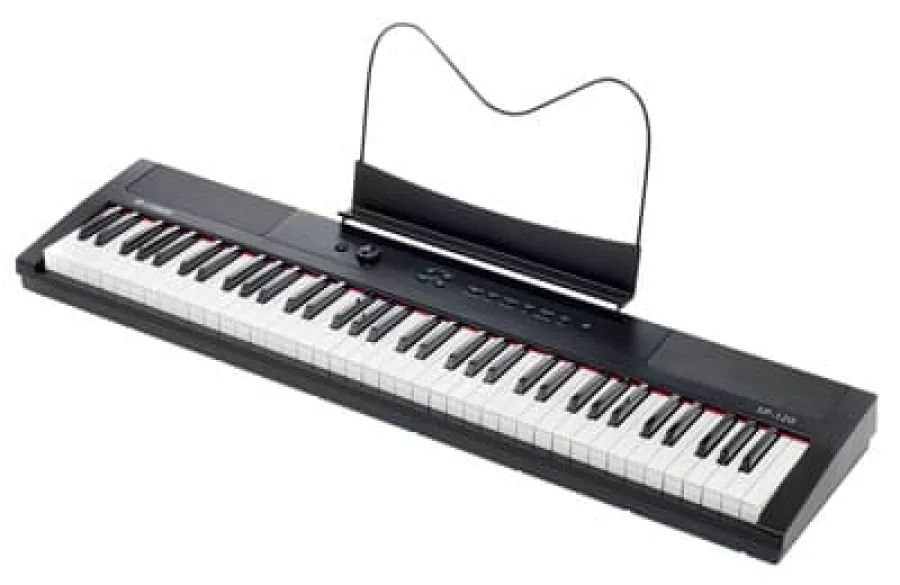
Key Facts about SP-120
73 velocity-sensitive keys
Compact and lightweight (approx. 6 kg)
Acoustic and electric sounds with effects
USB connectivity for integration into digital setups
Battery or power adapter operation & Ideal for mobile use
When you're getting your first piano, you should not only focus on the instrument itself but also consider the right piano accessories. These not only provide more comfort while playing, but also help you get the best out of your instrument and ensure long-term enjoyment of playing the piano.
Piano Bench or Keyboard Stool
An ergonomically correct sitting posture is essential when playing the piano to avoid tension and poor posture. A stable piano bench or a height-adjustable keyboard stool allows you to set the optimal seat height. This is especially important for beginners, so that your arms reach the keyboard at a comfortable angle and your feet rest securely on the floor. Piano benches often offer a padded seat for more comfort during longer practice sessions, while keyboard stools are usually lighter and more compact—ideal if you transport your instrument often or have limited space.
Headphones
To practice undisturbed, even late into the night, without disturbing the neighbors, headphones are essential. You should make sure they offer a comfortable fit, because if you play for a longer time, pressing headphones can become a major distraction.
Pedals
With digital pianos, a sustain pedal is usually included, but ideally you should use a triple pedal unit (sustain, soft, sostenuto) like on a real piano. For keyboards, it’s common to buy the sustain pedal separately, which can be a game changer—especially when playing romantic and expressive legato pieces, as it enhances the playing experience significantly.
Stand
Depending on the model, digital pianos are often fixed or styled as furniture with side panels, which adds stability and gives a piano-like, high-quality appearance. For keyboards, foldable and height-adjustable stands in X- or Z-shape are important for stability while playing and are usually not included in the package.
Sheet Music Stand
Many instruments already come with an integrated music rest. If not, it's definitely worth getting a separate sheet music stand, especially when playing with keyboards.
The right start in learning piano is just as important as the right instrument. Especially for beginners, online courses, such as the Music2me piano course, offer a structured learning path that guides you systematically from the first basics to simple pieces. You’ll learn everything important – from reading music, to correct hand positioning, to finger coordination and rhythmic playing.
For those who want to better plan their learning journey, it's worth taking a look at our detailed article “The Fundamentals of Learning Piano in 13 Steps.” There you’ll find a clear, well-structured roadmap that shows you which skills and techniques to practice and when, so you can gradually build confidence and improve step by step.
Buying your first piano is an important step that lays the foundation for your musical development. Whether acoustic piano, digital piano, or keyboard – each option has its advantages, and what matters most is that the instrument suits you and your lifestyle.
With the right instrument and a bit of patience, you can gradually develop new skills and discover the joy of playing the piano. Your piano will become a companion that motivates you to keep going and grow musically. Stay open to new experiences, practice regularly, and give yourself time to truly feel the music. This way, you'll turn your first note into the beginning of a long, fulfilling journey – entirely at your own rhythm.
There are many difficult piano pieces. We present five pieces that are so demanding that they were considered unplayable at times. Even today, they still demand skills from pianists that cannot be acquired through practice alone.
Is it even possible learning to play the piano as an adult? Of course it is! Discover how to play piano at any age.
Vivaldis Four Seasons is probably his most famous piece. We provide you its genesis and Vivaldis history.